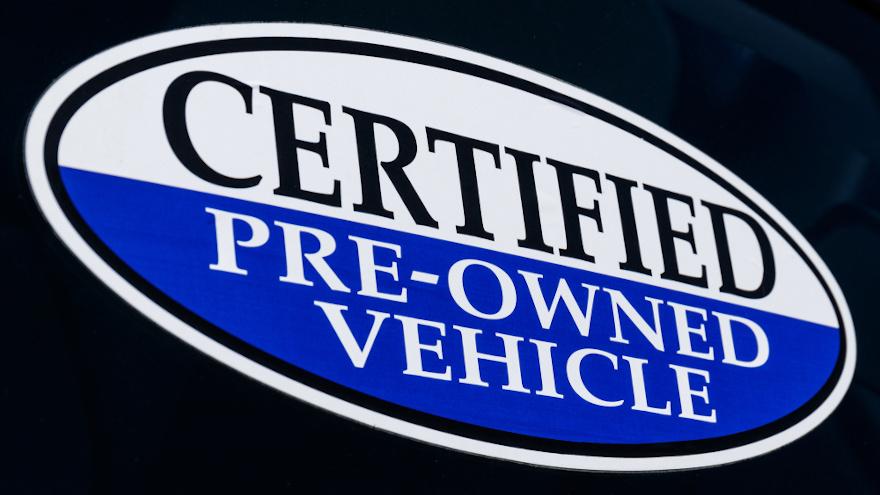COMMENTARY: CPO — The industry’s loyalty product

Image by Jonathan Weiss / Shutterstock.com
By subscribing, you agree to receive communications from Auto Remarketing and our partners in accordance with our Privacy Policy. We may share your information with select partners and sponsors who may contact you about their products and services. You may unsubscribe at any time.
How should we think of certified pre-owned?
Is this a used, new or a new used vehicle, or should we stick to calling it “like-new?” Regardless of what we classify as CPO, we accept that CPO vehicles can be some combination.
We treat it like a different product. How we market, advertise, label and sell these vehicles somehow proves that.
Exiting the Great Recession, sales of certified pre-owned vehicles barely exceeded 1.5 million units. The industry would have to wait until 2013 for annual CPO sales to exceed 2 million units. However, since 2012 the industry has seen annual sales grow by 1 million units.
While 2.5 to 3 million CPO sales a year might seem small compared to the broader used-vehicle market, which sees 40 million sales a year, the CPO market is significant to the used retail market, the market that involves dealers.
Bear with me as I dust off my industry insights hat. CPO sales are interesting to forecast because a few variables can impact supply.
Subscribe to Auto Remarketing to stay informed and stay ahead.
By subscribing, you agree to receive communications from Auto Remarketing and our partners in accordance with our Privacy Policy. We may share your information with select partners and sponsors who may contact you about their products and services. You may unsubscribe at any time.
First, the strength of the retail leasing market two to three years prior to the current sale year plays a crucial role in determining the possible universe of what can be certified. Typically, vehicles coming off lease drive the supply of what ends up being certified.
It’s important to note that not all off-lease vehicles become CPO vehicles. Secondly, the current market impacts the strength of CPO. Overall strength in the used retail market affects dealer demand (and ability) to certify off-lease units. And lastly, OEM incentives on CPO programs can influence the rate at which eligible vehicles are certified by dealers.
Keeping this in mind, where do we see CPO sales? It’s hard to envision an environment where we have a dramatic pullback in CPO sales.
Could it take a year or two to set a new annual sales record? Sure. Do we get back to 2012-2014 levels?
Probably not. The challenge in the CPO market today (and in the foreseeable future) is not demand but supply. But hovering around 2021 levels of CPO sales is probably the best bet when thinking about how the market will perform over the next couple of years as we get past the challenges caused by the pandemic.
The beauty of certified pre-owned is not in the respective OEM program, but it’s the consumer that’s jumping into the CPO vehicle. A common term used to describe some CPO shoppers is “budget-conscious,” and while that may be true for a subset of that population, I think we need to emphasize that these are, broadly speaking, “value-driven” shoppers.
These consumers are willing to pay a premium for a vehicle due to their understanding of CPO programs and what that means for the quality of their purchase. Here you have the perfect loyalty scenario if you are a dealer and OEM: a consumer willing to spend extra on a vehicle and, in return, asking for peace-of-mind on their purchase.
A good-to-great experience in that vehicle and with that brand adds strength and support in laying the foundation of consumer loyalty. Add in a customer’s in-store experience related to service, and you have a great tool to keep a customer engaged with the brand and dealership.
How can we test this?
Let’s think about incentives. Vehicle shoppers respond to incentives, and we know that the industry is not shy about spending billions of dollars on various incentive programs.
Why not conquest shoppers into CPO to drive loyalty? What is the long-term return on an incentive program getting a non-CPO customer into a brand’s CPO program, and what does that mean to their next one, two, or three future vehicle purchases?
Sure, current market conditions in new and used vehicles suggest it might not make sense to allocate incentive dollars to test this idea. Still, soon it might be an economical way to drive sales, consumer satisfaction and strengthen loyalty.
There is no denying CPO sales volume is likely to be impacted by the pandemic’s disruption of new-vehicle sales and drop in the retail leasing rate over the last couple of years.
Even with CPO sales forecast to see slow/low growth, the value of the vehicles sold is expected to increase greatly due to the changing mix of vehicles being sold CPO. A constant younger mix of vehicles, favoring light trucks and eventually electric vehicles, suggests vehicles being sold into the CPO market while see average transaction prices rise due to that shift.
This means the CPO market offers consumers a wider range of options under $30,000 than the new-vehicle market. Whether annual CPO sales swing up or down a few hundred thousand units might impact short-term forecasts, it’s safe to assume this $50+ billion (and growing) industry isn’t going anywhere.
Near-term supply constraints can be overcome in a few years but the foundation for demand that’s been vital to the growth of CPO was laid over a decade ago and continues to strengthen.
Zo Rahim is the founder and chief executive officer of CPyO. This new site is designed to help dealers increase visibility of their certified pre-owned vehicles for sale, help automakers boost awareness of their certified programs and give consumers more confidence in shopping CPO. Rahim is a former automotive analyst at Cox Automotive.


